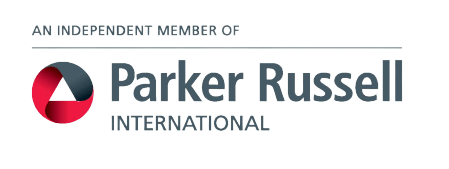6 tax allowances to use before the tax year end
The 5 April may feel like a lifetime away as you decorate your Christmas tree or enjoy another glass of mulled wine. But if previous years have taught us anything, it’s that the tax year end comes around quickly. So, now is a great time to think about the 6 tax allowances and exemptions you have yet to make the most of before they reset.
Read on for more details on 6 tax allowances that will reset on 6 April and why making the most of them now could help you to progress towards your long-term financial goals.
1. Your annual ISA limit
An ISA is a tax-efficient way to save for your goals because any interest earned in your Cash ISAs, or returns generated in your Stocks and Shares ISAs, are shielded from Income Tax or Capital Gains Tax (CGT).
In 2024/25, you can contribute a combined total of £20,000 into any ISAs that you own, though there are different rules for different types of ISAs.
For example, you can only contribute a maximum of £4,000 a year into a Lifetime ISA, or £9,000 a year into a Junior ISA for your child or grandchild. It’s important to note that it’s not possible to carry forward any unused allowance.
A recent change to ISA rules means that you can now contribute to multiple ISAs in each tax year (previously you could only contribute to one Cash ISA and one Stocks and Shares ISA in a year). So, it’s even more important to keep track of your deposits to ensure you don’t accidentally exceed the annual ISA limit.
Using tax-efficient wrappers such as ISAs can be a helpful way to work towards your long-term goals and mitigate your annual tax bill. Your planner can offer you personalised advice about the most suitable wrappers to use to achieve your personal goals.
2. Dividend Allowance
You don’t pay tax on dividend income that falls within your Personal Allowance (£12,570 in 2024/25) and the Dividend Allowance each year. But, any dividend income that exceeds these thresholds is taxable, and the rate you’ll pay depends on your Income Tax band.
In 2024/25, the Dividend Allowance is £500, and the Dividend Tax rates are as follows:
• Basic-rate taxpayer: 8.75%
• Higher-rate taxpayer: 33.75%
• Additional-rate taxpayer: 39.35%.
You might wish to consider reinvesting dividends you earn. This could help you to grow your investment portfolio further, though of course returns are not guaranteed.
If you are a business owner, dividends could be a tax-efficient way to extract profit from your business, as Dividend Tax rates are lower than Income Tax rates. This approach has several advantages and disadvantages, so it’s important to consult your planner for advice that is aligned with your goals and personal circumstances.
3. Capital Gains Tax Annual exempt amount
CGT is usually payable on the profit you make from selling or disposing of assets, including:
• Business assets
• Property that isn’t your home
• Shares that aren’t held in a tax-efficient wrapper
• Most personal possessions that are valued over £6,000 (excluding your car).
You only pay CGT on the profits you make, minus what you paid when you acquired the asset and any other fees you paid when selling the asset. Each year, you also have a CGT Annual Exempt Amount, so if the profits fall below this limit, you won’t need to pay CGT. In 2024/25, the CGT Annual Exempt Amount is £3,000 (or £1,500 for trusts).
The new Labour government changed the rate of CGT in their first Budget, effective from 30 October 2024. So, the rate of CGT you pay in 2024/25 will depend on your Income Tax band, the type of asset you have sold, and when you made the gain.
If you are a higher-rate taxpayer, you’ll pay CGT as follows:
If you are a basic-rate taxpayer and your taxable income remains within the basic-rate band including your capital gains liability, you’ll pay CGT as follows:
It may be helpful to consider making the most of your combined allowances if you are married or in a civil partnership. You each have an Annual Exempt Amount, and you can transfer assets to your partner free from CGT. So, approaching your CGT liability as a couple could help you to mitigate your tax bill and make progress towards your long-term goals.
4. Your pension Annual Allowance
Contributions to your pension are usually eligible for tax relief at your marginal rate, so as well as enabling you to save towards your retirement, a pension can be a helpful way to mitigate your overall tax bill for the year. However, if you contribute more than your Annual Allowance, you could trigger a tax charge.
In 2024/25, the Annual Allowance is £60,000, or 100% of your earnings, whichever is lower. Your Annual Allowance may be lower if you have a high salary or have already started to take a flexible income from your pension.
You may be able to “carry forward” any unused Annual Allowance for up to three tax years. So, if you didn’t use your full allowance in the last three tax years, you may be able to contribute more than your Annual Allowance in this tax year without facing a tax charge.
Your pension could be one of your main sources of income in retirement, so it’s sensible to make the most of your allowances and contribute as much as possible throughout your career. Your planner can help you identify how much to set aside in your pension each year to help you work towards your retirement goals.
5. Income Tax relief on the Enterprise Investment Scheme
The Enterprise Investment Scheme (EIS) offers tax relief to those who are in a position to invest in small companies to help support their growth. These investments are considered high risk, so they’re not suitable for everyone and it’s vital to seek advice from your planner before you decide to invest.
If you do choose to proceed, though, as well as the potential for investment growth, you can claim up to 30% Income Tax relief on your investment, up to a limit of £1 million each tax year provided you have held the investment for a minimum of three years.
Moreover, you won’t pay CGT on investment growth in an EIS and you may be able to pass on these assets to beneficiaries free from Inheritance Tax (IHT) if you have held them for at least two years when you pass away as they qualify for Business Relief.
So, even though there are risks to consider, making the most of the Income Tax relief, CGT relief, and potentially reduced IHT that EIS investments offer could help you to grow your wealth tax-efficiently.
6. Venture Capital Trust tax relief
A Venture Capital Trust (VCT) is a company that invests in lots of different start-ups and small businesses. So, when you invest through them, you invest in these small companies, helping them to secure funding at an early stage of their growth.
Just like the EIS, a VCT is a high-risk investment and you should only invest what you can afford to lose. If you do decide to invest, you can claim Income Tax relief of up to 30% on your investment, up to a limit of £200,000 each year. Moreover, dividends that you receive are tax-free and you don’t pay CGT when selling VCT shares.
So, as well as the potential for investment growth, investing through a VCT could help you grow your wealth by mitigating your annual tax bill.
Get in touch
If you have found reading about these 6 tax allowances to use before the new tax year interesting you can now arrange an initial meeting with no obligation, with a member of our financial services team. Please contact us at hello@rpgcc.co.uk or call 020 7870 9050 to speak to us. Or you can visit our web chat in the bottom right corner, which we respond to personally during office hours and you can leave a message out of hours. The RPGCC team is always just a click or call away.
Please note
This article is for general information only and does not constitute advice. The information is aimed at retail clients only.
Please do not act based on anything you might read in this article. All contents are based on our understanding of HMRC legislation, which is subject to change.
The Financial Conduct Authority does not regulate tax planning or trusts.
A pension is a long-term investment not normally accessible until 55 (57 from April 2028). The fund value may fluctuate and can go down, which would have an impact on the level of pension benefits available. Past performance is not a reliable indicator of future performance.
The tax implications of pension withdrawals will be based on your individual circumstances. Thresholds, percentage rates, and tax legislation may change in subsequent Finance Acts.
The value of your investments (and any income from them) can go down as well as up and you may not get back the full amount you invested. Past performance is not a reliable indicator of future performance.
Investments should be considered over the longer term and should fit in with your overall attitude to risk and financial circumstances.
The Enterprise Initiative Scheme (EIS) and Venture Capital Trusts (VCTs) are higher-risk investments. They are typically suitable for UK-resident taxpayers who are able to tolerate increased levels of risk and are looking to invest for five years or more. Historical or current yields should not be considered a reliable indicator of future returns as they cannot be guaranteed.
Share values and income generated by the investments could go down as well as up, and you may get back less than you originally invested. These investments are highly illiquid, which means investors could find it difficult to, or be unable to, realise their shares at a value that’s close to the value of the underlying assets.
Tax levels and reliefs could change and the availability of tax reliefs will depend on individual circumstances.





